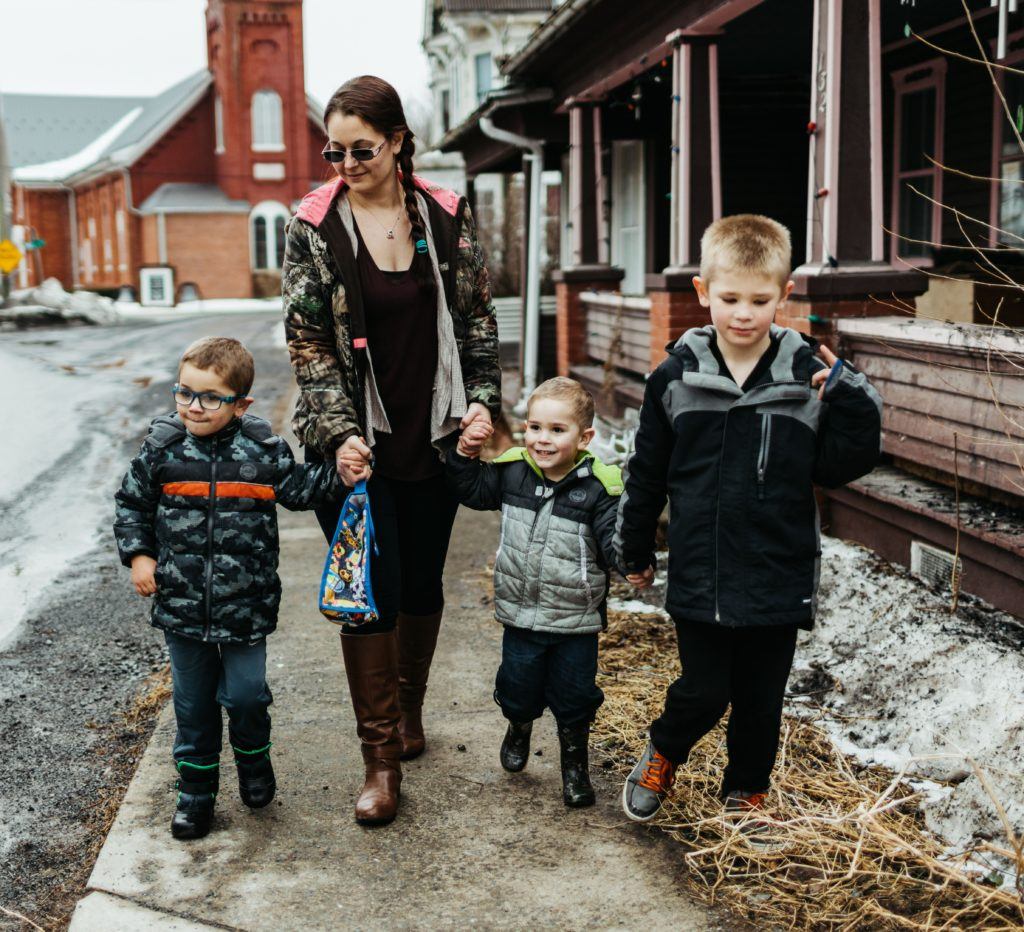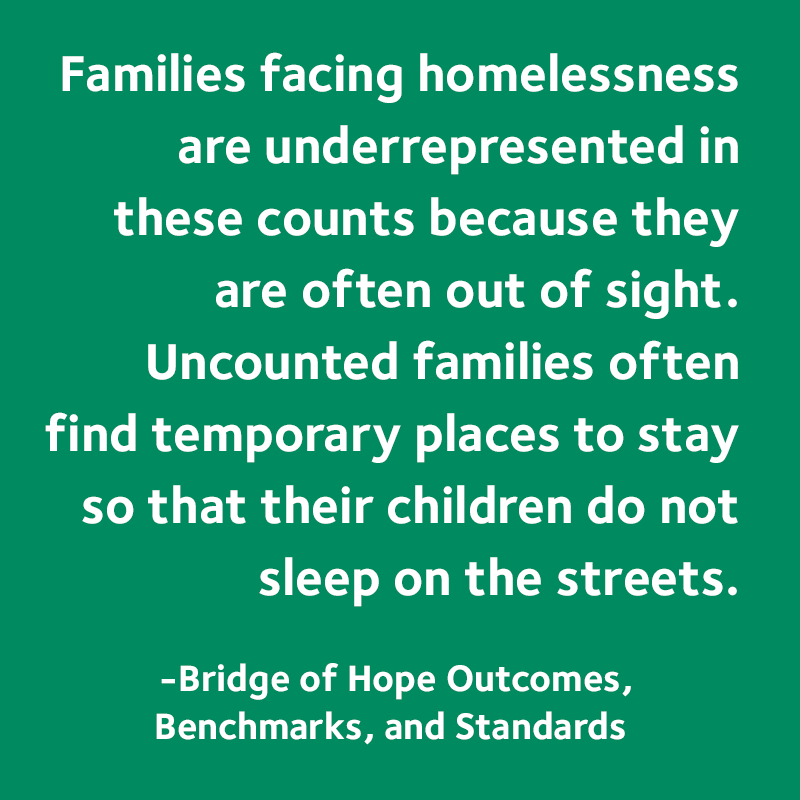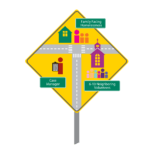Snapshot: Family Homelessness in the United States
Family homelessness is a growing social problem affecting  families in every state. Nationwide, 85% of providers have seen family homelessness increase in recent years. More families experience homelessness in the United States than in any other industrialized nation. *The Bassuk Center on Homeless and Vulnerable Children & Youth
families in every state. Nationwide, 85% of providers have seen family homelessness increase in recent years. More families experience homelessness in the United States than in any other industrialized nation. *The Bassuk Center on Homeless and Vulnerable Children & Youth
- A typical homeless family is comprised of a single mother with two young children. *Institute for Children, Poverty, and Homelessness
- More than 80% of all families experiencing homelessness are headed by women. * The 2012 Annual Homeless Assessment Report (AHAR) to Congress
- More than 5 million children are homeless each year in America. *The Bassuk Center on Homeless and Vulnerable Children & Youth/Services Matter
- One in 30 American children experience homelessness annually.
- 51% are under age five.
- Homelessness among identified school-aged children and youth increased by 11.1%, from the 2016-2017 to the 2017-2018 school year. *U.S. Department of Education
- African Americans who are members of families with children accounted for 52 percent of people experiencing homelessness, despite being 13 percent of the U.S. population. * The 2012 Annual Homeless Assessment Report (AHAR) to Congress
- Family homelessness, once viewed as episodic and situational, has become chronic, with families accounting for 37% of the overall homeless population and 50% of the sheltered population. *The Bassuk Center on Homeless and Vulnerable Children & Youth/Services Matter
- The majority of families staying in temporary doubled-up arrangements do not enter shelter, in some cases because they are not found eligible for services or do not meet the definition of homelessness. *Institute for Children, Poverty, and Homelessness
Path to Homelessness
 Essential supports for women alone with children might include pediatric and medical care, transportation, childcare, school supports (e.g., tutoring), and supportive friendships. When these supports are sufficiently depleted, especially in the current housing market, poor women are at increased risk of becoming homeless. *The Bassuk Center on Homeless and Vulnerable Children & Youth/Services Matter
Essential supports for women alone with children might include pediatric and medical care, transportation, childcare, school supports (e.g., tutoring), and supportive friendships. When these supports are sufficiently depleted, especially in the current housing market, poor women are at increased risk of becoming homeless. *The Bassuk Center on Homeless and Vulnerable Children & Youth/Services Matter
- In no state in the US is a market rate apartment affordable at minimum wage. *National Low Income Housing Coalition (2019) Out of Reach 2019: 30th Anniversary. Washington DC: National Low Income Housing Coalition.
- One in four renters spends more than half their income on housing. Almost half pay over 30% of their incomes on rent. *Harvard Joint Center for Housing Studies
- Families with children were more likely to have difficulty paying rent, and twice as likely to face the threat of eviction, compared to households without children. *United Stated Interagency Council on Homelessness – Homelessness in America: Focus on Families with Children
– Black households were more than twice as likely to face eviction, compared to white households.
– Families often experience significant barriers when they search for housing after they have been evicted.
- Over 1/3 of adults with children were staying with families or friends prior to entering a homeless shelter. *Institute for Children, Poverty, and Homelessness
- Many homeless women have exhausted their supports after months and sometimes years of doubling-up in overcrowded and often substandard apartments, setting the stage for entering emergency shelter. *The Bassuk Center on Homeless and Vulnerable Children & Youth/Services Matter
- Poverty, violence, and the housing shortage sometimes combine to disrupt relationships and dislocate long-term residents, destroying networks that have been years in the making.
- More than 90% of mothers experiencing homelessness have experienced some sort of interpersonal violence. *The National Center on Family Homelessness at AIR
The Impact 
Parents struggling with financial hardship have fewer resources available to foster their children’s development and are more prone to severe stress and depression, which can interfere with effective parenting. To help children grow into prepared, productive adults, parents need jobs with family-sustaining pay, affordable housing and the ability to invest in their children’s future. *The Annie E. Casey Foundation – Kids Count Data Book 2020: State Trends in Child Well-Being
- Parents who are unemployed or earn low wages have limited access to resources to support their kids’ development, which can undermine their children’s health and prospects for success in school and beyond.
- The Adverse Childhood Experiences (ACEs) study measures the impact of childhood trauma. Homelessness and housing instability are significant traumatic experiences for children. *United Stated Interagency Council on Homelessness – Homelessness in America: Focus on Families with Children
- The average number of childhood moves was greater for those who had been exposed to any type of ACE, including childhood abuse, neglect, witnessing domestic violence, and others.
- As the frequency of residential moves increased, the likelihood for each of the ACEs also increased.
- There was a strong relationship between residential mobility (moves during childhood) and the odds for reporting negative health outcomes including depression, smoking, attempted suicide, alcoholism, and teenage pregnancy.
- Exposure to violence, family stress, inadequate housing, lack of preventive health care, poor nutrition, poverty and substance abuse undermine children’s health. *The Annie E. Casey Foundation – Kids Count Data Book 2020: State Trends in Child Well-Being
- Poor health in childhood affects other critical aspects of a child’s life, such as school readiness and attendance, and can have lasting consequences for future health and well-being.
- Eviction and barriers to housing sets off a cascading set of hardships, risks, and harms that contribute to prolonged instability or homelessness, lost employment opportunities for parents, and health risks and poor school performance for children. *United Stated Interagency Council on Homelessness – Homelessness in America: Focus on Families with Children
The Solution 
Housing is essential to ending homelessness, but it is not sufficient. Families need basic supports beyond decent affordable housing to thrive: food, education, employment, child care, transportation, health and mental health care, trauma-informed care, and children’s services. *The Bassuk Center on Homeless and Vulnerable Children & Youth/Services Matter
- Along with housing, families require services that address the reasons for their homelessness, and prepare them for self-sufficiency.
- A two-generation approach to ending poverty is necessary, which addresses the needs of parents and children at the same time so that both can succeed together. *The Annie E. Casey Foundation – Kids Count Data Book 2020: State Trends in Child Well-Being
- Support networks are women’s social capital, a resource which poor women and women in crisis must often draw upon very heavily. *The Bassuk Center on Homeless and Vulnerable Children & Youth/Services Matter
- Close relationships with friends and family serve to ease the strains of daily life, and to protect in times of economic and social stress. Supports ameliorate stress once crises have occurred, and also can prevent crises.
- Both housing and services tailored to each family are necessary to prevent future homelessness and to avoid isolation and destabilization even after exiting homelessness.
Bridge of Hope offers a holistic and comprehensive solution by engaging Christian faith  communities in ending family homelessness through neighboring relationships that demonstrate Christ’s love.
communities in ending family homelessness through neighboring relationships that demonstrate Christ’s love.
- Neighboring is answering the call to love our neighbors by providing:
- tangible support
- networking on their behalf by sharing social capital
- encouragement and emotional support
- Families receiving Bridge of Hope services work with professional case management staff to achieve:
- safe and sustainable housing
- financial stability
- whole family strength and resiliency
